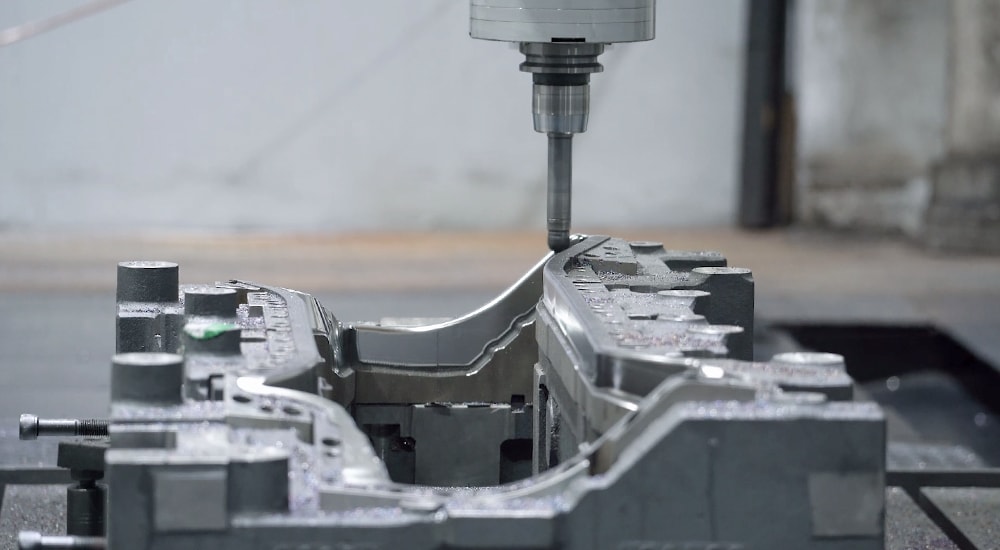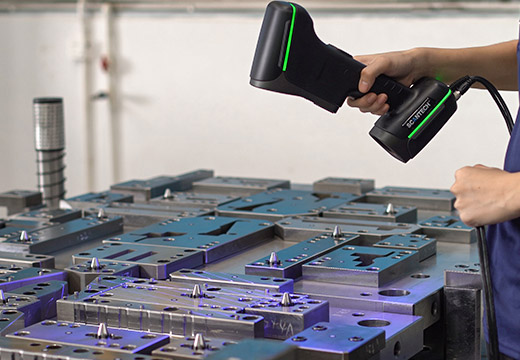In modern industrial manufacturing, especially in technology-intensive fields such as precision molds and automotive engineering, CAE simulation analysis has become the core technical means to improve research and development efficiency and reduce cost risks. For enterprises focusing on automotive hardware molds, CAE is the key support to realize "design is the best" and "trial mode with less mistakes.
The core definition of 1. CAE: replacing physical trial and error with digital simulation
CAE(Computer Aided Engineering, computer-aided engineering) refers to the use of computer software to establish mathematical models to simulate and analyze the physical properties, operating processes, structural strength, etc. of engineering or products. To put it simply, it "rehearses" the whole process of the product from design to use in the computer virtual environment, discovering problems and optimizing the scheme in advance, without repeatedly making physical prototypes.
In the field of automotive molds, CAE simulation analysis focuses on the metal stamping process, through numerical calculation of the physical behavior of the reduced material in the mold cavity flow, deformation, force and other physical behavior, accurate prediction of possible cracking, wrinkling, rebound, size deviation and other issues, to provide data support for mold design and process optimization.
The core role of 2. CAE simulation analysis: covering the whole life cycle of mold
CAE technology is not a single tool, but a technical system that runs through the whole process of "design-manufacture-trial-production" of automobile molds. Its core role is reflected in three major links:
1. Design stage: avoid molding risk in advance
Before the die drawing is finalized, CAE can simulate the deformation trajectory of materials (such as high-strength steel and aluminum alloy) during the stamping process through formability analysis:
Predict whether the material will crack due to excessive stretching or wrinkle due to uneven flow;
Analyze the influence of die surface, drawbead layout, pressure force and other parameters on forming, and optimize the design scheme;
For the springback materials (such as 980MPa high strength steel), the dimensional change after unloading is calculated by springback simulation, and the surface compensation is carried out in the mold design in advance to ensure the accuracy of the parts.
This step can reduce the design defect rate by more than 60% and avoid the inefficient mode of "manufacturing first, rework later.
2. Process stage: optimize the matching of production parameters
After the mold is manufactured, CAE can simulate the influence of different stamping process parameters (such as stamping speed, lubrication conditions, temperature) on the forming:
For deep drawing parts, the control strategy of the edge-hold force is optimized to avoid local material accumulation or excessive thinning;
For multi-process progressive dies, the synergy of continuous stamping at each station is simulated to ensure positioning accuracy and beat matching between processes;
Through stress and strain analysis, the stress limit of the key parts of the mold (such as cutting edge and guiding mechanism) is determined to avoid the damage of the mold due to overload in production.
Through the optimization of process parameters, the commissioning cycle of the customer's production line can be shortened by 30%, and the pass rate can be increased to more than 99%.
3. Verification phase: to ensure the long-term stability of the mold
CAE can also simulate the structural strength and fatigue life of the mold:
Simulate the deformation and stress concentration points of the die in the long-term stamping process to ensure that the structural strength meets the stamping requirements for more than 100000 times;
Predict the wear pattern of wearing parts (such as male and female dies, guide posts), make maintenance plans in advance, and reduce the risk of customer production line downtime;
The heat-force coupling analysis of the heat treatment process of the high-strength steel mold is carried out to optimize the quenching process and reduce the loss of mold accuracy.
Technical Principles of 3. CAE Simulation Analysis: Transformation from Model to Data
The core of CAE analysis is to "transform physical problems into mathematical equations and solve them by computer". The specific process includes four steps:
Create geometric models: import 3D design data of molds and parts, simplify redundant structures, and retain key features;
Meshing: the model is divided into millions of tiny cells (grids), each cell corresponds to a set of mechanical parameters, which is the basis of numerical calculation;
Set boundary conditions: input material properties (such as yield strength, elastic modulus), stamping process parameters (blank pressing force, speed), friction coefficient, etc;
Solving and post-processing: Solve mathematical equations by finite element algorithm, output visualization results such as stress cloud map, deformation animation, springback, etc., to provide optimization basis for engineers.
The Unique Value of 4. CAE in Automobile Mould: Reducing the cost, Efficiency and Quality
For automotive mold companies and downstream car companies, the value of CAE technology is reflected in three dimensions:
Cost reduction: reduce the number of physical mold test (from the traditional 3-5 times to 1-2 times), reduce material waste and equipment loss, a single set of mold research and development costs can be reduced by 20%-30%;
Efficiency improvement: the mold design cycle is compressed by more than 25%, helping the rapid mass production of new car parts and seizing market opportunities;
Quality improvement: through accurate prediction and optimization, it is ensured that the dimensional accuracy (within ± 0.02mm) and surface quality of the molded parts fully meet the automotive safety standards, especially in high-end fields such as lightweight parts of new energy vehicles and high-strength steel safety parts.
Summary: CAE is the "digital twin" of mold intelligence"
In simple terms, CAE simulation analysis is like creating a "digital twin" for the mold, completing the whole process verification from design to production in the virtual world. It allows engineers to get rid of "experience dependence" and "trial and error cycle", and uses data to drive decision-making. It is the core technical support for automobile molds from "traditional manufacturing" to "precise intelligent manufacturing. For such a professional mold enterprise, CAE is a "technical weapon" to ensure the quality requirements of international customers such as Volvo and Land Rover ".



